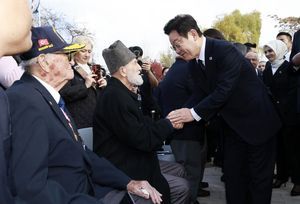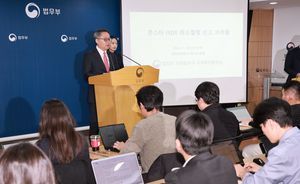 As South Korea sizzles under extreme heat and tropical nights, many are wondering if this summer’s temperatures will once again shatter records.
As South Korea sizzles under extreme heat and tropical nights, many are wondering if this summer’s temperatures will once again shatter records.
From July 1 to Tuesday, Seoul experienced a total of 21 tropical nights. The KMA notes this is the highest number recorded in the capital for July since weather records began in 1907, surpassing the previous record set in 1994.
A tropical night occurs when temperatures remain above 25°C (77°F) from 6:01 p.m. to 9 a.m. the following day.
Other cities across the country are also enduring prolonged stretches of tropical nights. Seogwipo on Jeju Island has experienced 15 consecutive tropical nights as of Tuesday. Cheongju, Gangneung, and Incheon have each seen 10 consecutive tropical nights.
The KMA attributes these extended tropical nights to the Tibetan and North Pacific high-pressure systems currently hovering over the Korean Peninsula.
“The overlap of these two high-pressure systems above Korea has trapped hot air in the atmosphere, preventing it from escaping overnight,” a KMA spokesperson explained.
Compounding the issue, warm, humid air from the south continues to flow into the country, further elevating temperatures in inland areas.
As of 1 p.m. Wednesday, most of the country is under a heat wave warning, with average apparent temperatures ranging from 30°C to 37°C (86°F to 98.6°F). In Korea, authorities issue heat wave warnings when the maximum apparent temperature is expected to exceed 35°C for two or more consecutive days, and a heat wave watch is issued when temperatures are forecast to reach 33°C.
Unusually, a heat wave watch has been issued in Taebaek, Gangwon Province, since Tuesday. This is noteworthy because Taebaek, situated at nearly 900 meters above sea level, rarely experiences such intense heat.
Currently, 181 of the 183 regions where weather records are kept—98.9 percent of the country—are under a heat wave watch or warning. Of these, 161 are under heat wave warnings, while 20 are under a heat wave watch. Only mountainous areas in Jeju Island and the Chuja Islands in the Jeju Strait remain unaffected.
Data collected so far indicates that this summer is on track to be one of the hottest on record. From June 1 to Tuesday, the KMA reported that average daily temperatures nationwide reached 24.9°C (76.8°F), the highest average for this period since 1973.
From June 1 to Tuesday, the KMA reported that average daily temperatures nationwide reached 24.9°C (76.8°F), the highest average for this period since 1973.
Korea has experienced an average of 15 heat wave days since June 1, the third-highest figure recorded since 1973.
Current conditions are drawing comparisons to Korea’s hottest years on record—1994, 2018, and 2024. Each of these summers saw similar weather patterns with the simultaneous expansion of the Tibetan and North Pacific high-pressure systems.
In 1994, Korea recorded 29.6 heat wave days and 16.8 tropical nights, influenced by an El Niño event. The summer of 2018, remembered as one of the most intense in Korea’s modern history, set records with 31 heat wave days.
Last year, in 2024, the country experienced a record 24.5 tropical nights and 30.1 heat wave days. Seoul even issued its first-ever September heat wave warning, with much of the nation enduring tropical nights during Chuseok, the mid-autumn harvest festival.
While this summer may not differ dramatically in intensity from past record-breaking years, experts note one key distinction: it “began earlier than usual.”
“Climate change is the primary driver behind this extreme heat,” said Professor Kim Baek-min of Pukyong National University’s Division of Earth and Environmental System Sciences in a radio interview. “When the North Pacific and Tibetan high-pressure systems expand over Korea, they trap heat, creating a furnace-like effect.”![Children cool off by playing in the water at a floor fountain installed in Pyeongri Park in Daegu, Monday. (Yonhap)]](https://contents-cdn.viewus.co.kr/image/2025/07/CP-2023-0309/31147567_2.jpg) “These conditions are becoming more frequent, suggesting that extreme heat is no longer a temporary phenomenon but a recurring issue we will likely continue to face.”
“These conditions are becoming more frequent, suggesting that extreme heat is no longer a temporary phenomenon but a recurring issue we will likely continue to face.”
The scorching weather is expected to persist for the next few days, with temperatures likely reaching 36°C to 37°C (96.8°F to 98.6°F) across the country until Friday. Heat wave advisories and tropical nights are also expected to continue.









Most Commented